Explore Lhasa - Tibet Travel, Asia
Lhasa, located in the middle of the Tibetan Plateau, serves as Tibet's spiritual and cultural epicenter. Known as the "Land of the Gods," this city is not only a pilgrimage destination for Buddhists worldwide but also a treasure trove for travelers seeking an authentic and immersive experience. The high-altitude city, with its rich heritage and breathtaking landscapes, offers a unique blend of tradition and modernity, making it a must-visit destination for any traveler. Whether you're drawn to its sacred sites, vibrant local culture, or the serene beauty of the Himalayas, Lhasa promises an unforgettable journey into the soul of Tibet.
Population: Approximately 868,000 in 2020.
Economy: Lhasa's economy thrives on tourism, with key sectors including hospitality, retail, and local crafts. The city also benefits from trade and agriculture, supporting its growth and development.
Landmarks: Famous for the Potala Palace, Jokhang Temple, and Norbulingka Palace.
Tibet
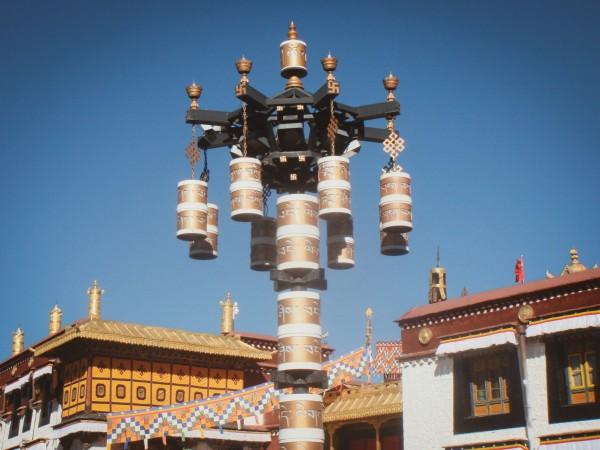
Overview of Lhasa
History & Culture Influence
Lhasa’s history dates back over 1,300 years, deeply intertwined with the development of Tibetan Buddhism. The city’s ancient roots are evident in its historic sites, like the iconic Potala Palace, which once served as the winter residence of the Dalai Lama. Walking through Lhasa, you can feel the echoes of its storied past, from the whispers of monks in the Jokhang Temple to the timeless rituals practiced by locals. Even in modern times, the spiritual practices and traditions remain a vital part of daily life.
Interaction with The Locals
Lhasa, the capital of Tibet, has a population of approximately 868,000 people. The majority of Lhasa's residents are ethnic Tibetans, deeply rooted in Buddhist traditions. The city also has a smaller Han Chinese community, contributing to its cultural diversity. Lhasa's citizens are known for their warmth and hospitality, often welcoming visitors with a genuine smile and a deep respect for their spiritual heritage. Despite modernization, the people of Lhasa maintain strong connections to their cultural and religious practices, making the city a living testament to Tibetan identity.
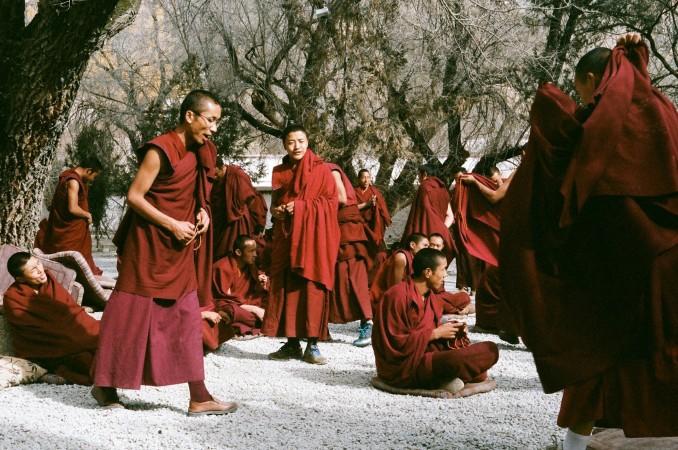
Tibetan monks in Lhasa before a debate session - © Will Pagel
Top Attractions in Lhasa
Lhasa is home to some of the most revered and iconic sites in Tibet, each offering a glimpse into the region’s deep spiritual roots and rich history. These must-visit attractions are not just tourist spots; they are living, breathing symbols of Tibetan identity.
- Potala Palace: This UNESCO World Heritage Site stands majestically on Red Hill, overlooking Lhasa. Once the winter residence of the Dalai Lama, the Potala Palace is an architectural marvel, housing thousands of rooms filled with relics, ancient manuscripts, and stunning murals. Its grand stature and spiritual significance make it a must-visit.
- Jokhang Temple: Often referred to as the spiritual heart of Tibet, the Jokhang Temple is the most sacred temple in Lhasa. Pilgrims from all over Tibet come here to offer prayers and perform the kora (circumambulation) around the temple. The temple’s golden roof and intricate design are awe-inspiring, making it a focal point of Buddhist devotion.
- Barkhor Street: Surrounding the Jokhang Temple, Barkhor Street is a bustling market and a pilgrimage route. Here, you can observe locals performing their devotional circuits while exploring shops that sell traditional Tibetan handicrafts, prayer flags, and other souvenirs. The vibrant atmosphere provides a perfect blend of spirituality and commerce.
- Norbulingka Palace: Norbulingka, often known as the "Summer Palace," was the Dalai Lama's traditional summer retreat. The palace is placed in a large park, providing a calm escape from the city's bustle. The magnificent gardens and well-preserved buildings make for a relaxing stroll.
- Sera Monastery: Famous for its debating monks, Sera Monastery offers visitors a chance to witness lively theological debates that are a key part of monastic education in Tibet. The monastery’s courtyards echo with the sounds of debate, providing a unique insight into Tibetan Buddhism.
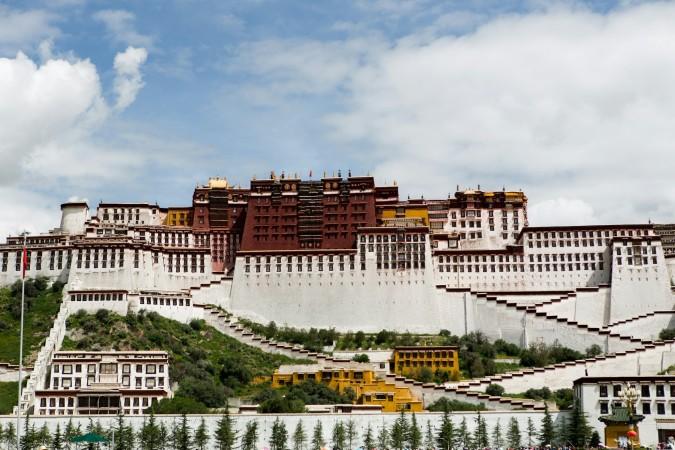
Potala Palace - © Raimond Klavins
Must-Try Dishes in Lhasa
Lhasa's culinary tradition is substantial and frequently uses indigenous foods like barley, yak meat, and dairy products. These meals not only provide a great introduction to Tibetan cuisine, but also a deeper understanding of Lhasa's culture and customs.
- Tsampa: The cornerstone of Tibetan cuisine, Tsampa is made from roasted barley flour and often mixed with butter tea or yogurt. This simple yet nourishing dish is a staple in Tibetan households and holds cultural significance as a symbol of Tibetan identity.
- Momos: A favorite among locals and visitors alike, these Tibetan dumplings are usually filled with yak meat, vegetables, or cheese. They can be steamed or fried and are served with a spicy dipping sauce. Momos are a must-try street food in Lhasa.
- Thukpa: This warming noodle soup is made with hand-pulled noodles, meat (typically yak or mutton), and a rich, spiced broth. Thukpa is perfect for Lhasa’s cool climate and offers a comforting taste of Tibetan home cooking.
- Butter Tea (Po Cha): A traditional Tibetan beverage, butter tea is made from tea leaves, yak butter, and salt. While its flavor might be unusual to first-timers, it’s an essential part of the Tibetan diet, providing warmth and energy in high-altitude conditions.
- Shapale: These Tibetan meat pies are stuffed with seasoned minced meat (often yak) and then fried or baked to a crispy golden brown. Shapale is a perfect snack or light meal, with a satisfying combination of flaky pastry and juicy filling.
- Tibetan Yogurt: Made from yak milk, Tibetan yogurt is thick, creamy, and slightly tangy. It’s often served with a sprinkle of sugar or honey and is a popular snack or dessert in Lhasa. Tibetan yogurt is often utilized as religious gifts during festivals.
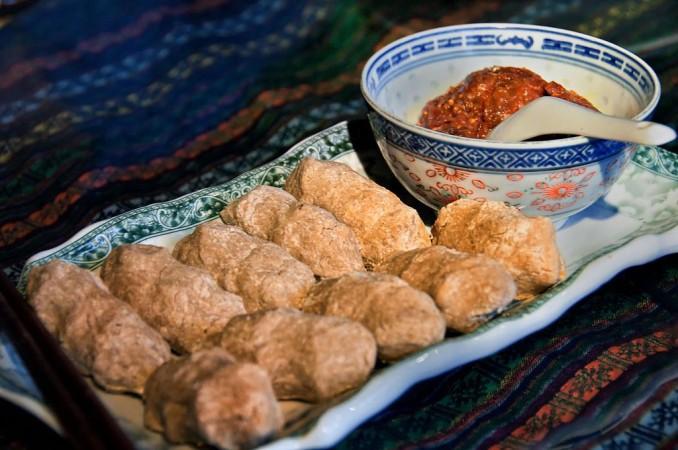
Tsampa - © BBCosplay
Festivals & Local Celebrations
Throughout the year, various festivals and local celebrations bring the community together, offering travelers a unique opportunity to immerse themselves in Tibetan culture. Participating in these festivals allows travelers to witness the deep-rooted traditions of Lhasa and experience the city’s vibrant cultural life.
- Saga Dawa Festival: This is one of Tibet's most major Buddhist festivals, celebrating the birth, enlightenment, and death of the Buddha. During Saga Dawa, pilgrims go to Lhasa, particularly the Jokhang Temple, to offer prayers and execute ceremonies. The celebration is distinguished by colorful processions, offerings, and the spinning of prayer wheels.
- Losar Holiday (Tibetan New Year): Losar is the most significant festival in Tibet, celebrated with much joy and anticipation. The festival lasts for several days, featuring traditional dances, music, and elaborate feasts. Homes are decorated with prayer flags, and people visit monasteries to offer their prayers for a prosperous year ahead.
- Shoton Festival (Yogurt Festival): Celebrated in late summer, the Shoton Festival is a lively event that begins with the unveiling of a giant Thangka painting at Drepung Monastery. The event also features Tibetan opera performances and yak races. It's a joyous occasion where both residents and visitors gather to celebrate.
- Butter Lamp Festival (Ganden Ngamchoe): Held in honor of Tsongkhapa, the founder of the Gelug school of Tibetan Buddhism, this festival sees Lhasa illuminated with thousands of butter lamps. It’s a serene and spiritual event, with prayers and chanting filling the air.
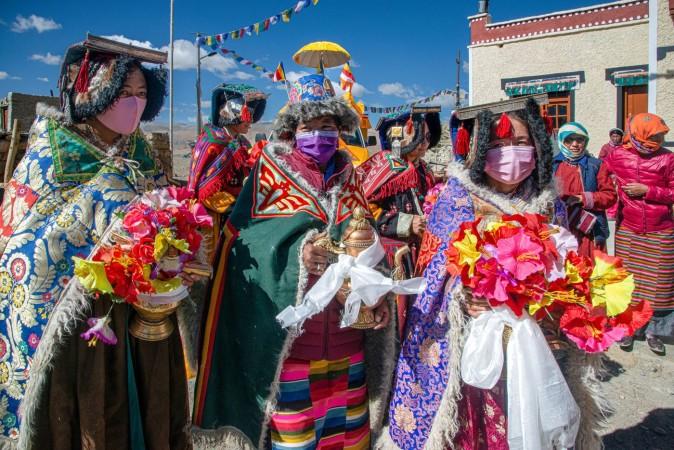
Saga Dawa Festival - © People's Archive of Rural India
What to Do in Lhasa
- Cultural and Spiritual Tours: Lhasa is home to some of the most significant religious sites in Tibet, making cultural and spiritual tours a top activity. Visit the Potala Palace and Jokhang Temple to learn about Tibetan Buddhism, witness the devotion of pilgrims and have meditation sessions with the monks.
- Trekking and Hiking: Lhasa is the perfect starting point for trekking adventures. One popular route is the Ganden to Samye Trek, which takes you through breathtaking mountain scenery and offers a glimpse of rural Tibetan life.
- Exploring Old City: Spend a day wandering around Barkhor Street, the heart of Lhasa’s old town. Here, you can explore the narrow alleys, visit local shops, and experience the daily life of Lhasa’s residents.
- Visit Norbulingka Palace: Take a leisurely stroll through the beautiful gardens of Norbulingka Palace, the summer residence of the Dalai Lama. The palace grounds offer a peaceful retreat from the busy streets of Lhasa and provide a great opportunity to relax and enjoy the natural beauty of Tibet.
Shopping in Lhasa
- Barkhor Street: A bustling marketplace that circles the Jokhang Temple, Barkhor Street is the heart of Lhasa’s shopping scene. You’ll find everything from prayer wheels, incense, and thangka paintings to traditional Tibetan clothing and jewelry.
- Tromsikhang Market: This busy local market, one of the oldest in Lhasa, provides a real Tibetan shopping experience. Here, you can shop for fresh produce, dried yak meat, Tibetan herbs, spices, and everyday household items used by locals.
- Norbulingka Road Market: A lesser-known gem for tourists, this market is where locals shop for Tibetan clothing and accessories. Here, you can discover traditional Tibetan garments, hats, and unique local fabrics at reasonable prices.
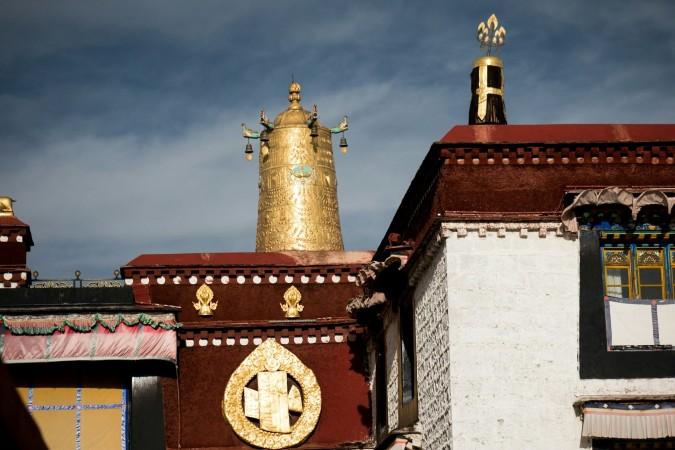
Spiritual Tours to Jokhang Temple - © Raimond Klavins
Weather in Lhasa: Best Time to Visit
Spring in Lhasa
- Weather: Spring in Lhasa is characterized by mild temperatures ranging from 10°C to 20°C (50°F to 68°F). The weather is generally dry, with sunny days and cool evenings.
- Tourism Trends: Spring is an excellent time for sightseeing as the weather is pleasant, and the city is less crowded than in summer. This season is ideal for exploring outdoor attractions like the Potala Palace and Jokhang Temple without the summer crowds.
Summer in Lhasa
- Weather: Lhasa experiences its warmest temperatures in summer, ranging from 15°C to 25°C (59°F to 77°F). However, this is also the monsoon season, so occasional rain showers are common, especially in July and August.
- Tourism Trends: Summer is the peak tourist season in Lhasa. The warmer weather and longer daylight hours are ideal for exploring the city and its surrounding areas.
Autumn in Lhasa
- Weather: Autumn in Lhasa brings cooler temperatures ranging from 10°C to 20°C (50°F to 68°F) and clear, sunny skies. The weather is dry, and the temperature starts to drop, especially in the evenings.
- Tourism Trends: Autumn is a popular time for visitors who prefer cooler weather and fewer crowds. The vibrant fall colors provide a picturesque backdrop, making it an excellent time for sightseeing and outdoor activities.
Winter in Lhasa
- Weather: Winters in Lhasa are frigid, with temperatures dipping to -10°C (14°F) at night and rising to roughly 5°C (41°F) during the daytime. Despite the cold, the weather is usually dry with plenty of sunshine.
- Tourism Trends: Winter is the off-peak season in Lhasa. This means fewer tourists and lower prices for accommodation and travel services. The clear skies and snow-capped mountains create a stunning winter landscape.
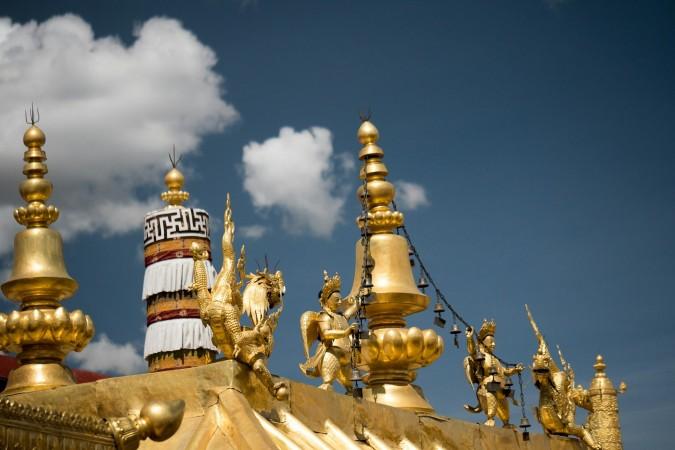
Any day is a good day to visit Lhasa, the "Land of the Gods" - © Raimond Klavins
Culture Etiquette in Lhasa
Tibetan culture is deeply rooted in Buddhism, and understanding the cultural etiquette will enhance your experience and show respect for the local people.
- Dress Modestly: Lhasa is a city with many religious sites, and modest clothing is expected, especially when visiting monasteries and temples. Long sleeves, trousers or long skirts, and avoiding overly revealing clothing is recommended.
- Show Respect at Religious Sites: Always walk clockwise around religious sites, including stupas and prayer wheels. Do not touch or climb on any sacred objects, and avoid pointing your feet toward altars or religious statues.
- Photography Etiquette: Photography can be sensitive in Lhasa, especially in religious contexts. Always ask for permission before taking photos of people, particularly monks and locals. Photography is often prohibited inside temples, so be sure to follow any posted guidelines.
Essential Travel Information
Getting Around Lhasa
- Walking: Lhasa’s compact city center makes walking an excellent way to immerse yourself in the local culture. You may easily walk about Barkhor Street, the Jokhang Temple, and the adjacent neighborhoods.
- Taxis: Taxis are accessible in Lhasa, and they are frequently reasonably priced. Make careful to negotiate the fare ahead of time, or ask the driver to utilize the meter.
- Public Buses: Lhasa’s public bus system is extensive and connects most parts of the city. Buses are very affordable, though they can be crowded during peak times.
- Bicycles and Electric Bikes: Renting a bicycle or electric bike is a popular option for those who want to explore Lhasa at their own pace. This mode of transport allows you to visit attractions that might be off the beaten path.
- Trishaws (Pedicabs): Trishaws offer a unique and leisurely way to see Lhasa. While they’re not the fastest mode of transport, they’re perfect for a relaxed tour of the city’s historic areas.
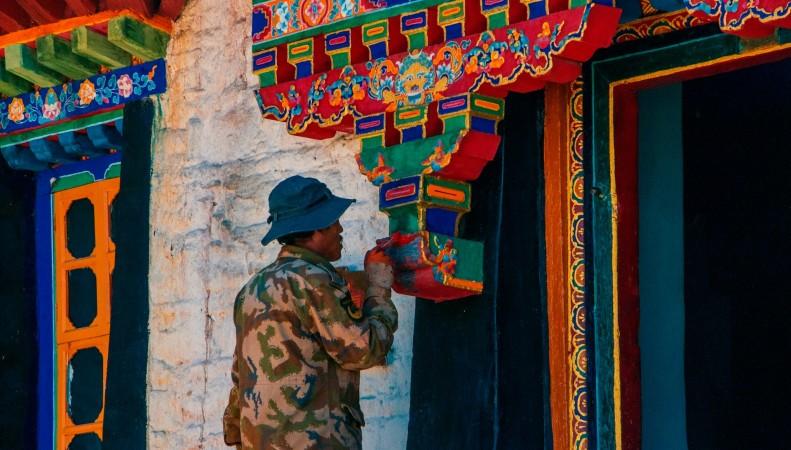
Explore the traditional Tibetan architecture - © lydia lei
ATM & Banking Services
In Lhasa, managing your finances is relatively straightforward with a range of ATM and banking services available. ATMs are scattered throughout the city and typically accept international cards, making it easy to withdraw Chinese Yuan. While credit and debit cards are accepted at big hotels, restaurants, and stores, it is best to bring cash, especially for smaller purchases and local markets. Be aware that banks may have limited hours, so plan accordingly, and always keep your travel permits and passport handy, as they might be required at various checkpoints.
Where to Stay in Lhasa
- Luxury Hotels: For those seeking high-end comfort and exceptional service, Lhasa boasts several luxury hotels. These lodgings provide luxury amenities such as big accommodations, good restaurants, and wellness facilities. Many luxury hotels are located near major attractions, providing convenient access to key sites.
- Mid-Range Hotels: These options often include modern amenities, comfortable rooms, and convenient locations. They are suitable for travelers looking for a comfortable stay without the high price tag of luxury accommodations.
- Budget Hotels and Guesthouses: Budget travelers can find a range of affordable hotels and guesthouses throughout Lhasa. These accommodations offer basic amenities and a cozy atmosphere, often with a more personalized touch, making them a great choice for those looking to immerse themselves in the local culture.
- Tibetan-Style Hotels: For a more authentic experience, consider staying in Tibetan-style hotels or lodges. These accommodations reflect traditional Tibetan architecture and decor, providing a unique cultural experience.
Articles for you

Explore Yala National Park - Sri Lanka Travel, Asia
Tucked away in Sri Lanka’s southeastern corner, Yala National Park is where wild nature meets deep tradition. Known worldwide for its leopard population, the park is also home to elephants, sloth bears, crocodiles, and hundreds of bird species. Beyond wildlife, Yala opens doors to a cultural landscape dotted with ancient temples, Buddhist ruins, and coastal villages. For travelers seeking more than just a safari, Yala offers a chance to explore eco-tourism, local communities, and sacred heritage sites.
Population: The Yala National Park area doesn’t have a human population.
Economy: The economy around Yala National Park thrives on a blend of eco-tourism, agriculture, and local services. Safari tours, eco-lodges, and cultural experiences drive steady income for nearby towns like Tissamaharama and Kataragama, supporting thousands of families.
Landmarks: Famous for Block I of Yala and wildlife encounters, including elephants, sloth bears, crocodiles, and exotic bird species.

Explore Galle - Sri Lanka Travel, Asia
Nestled on Sri Lanka’s southern coastline, Galle is a vibrant city where history meets the sea. Its cobbled streets, colonial architecture, and serene beaches make it a must-visit destination for travelers seeking a blend of culture, adventure, and relaxation. A UNESCO World Heritage site, Galle captivates visitors with its Dutch Fort, bustling markets, and friendly locals. Whether you’re exploring the ramparts at sunset or savoring fresh seafood by the shore, Galle promises an unforgettable journey into Sri Lanka’s heritage.
Population: Approximately 113,000 in 2023.
Economy: Galle’s economy thrives on tourism, trade, and fisheries. The city’s historic fort, colonial architecture, and coastal charm draw thousands of international visitors each year, making tourism its main economic driver. Fishing remains vital for local livelihoods, supplying fresh seafood across the region.
Landmarks: Famous for the Galle Fort, Dutch Reformed Church & Maritime Museum, and Unawatuna Beach.

Explore Bentota - Sri Lanka Travel, Asia
Nestled along Sri Lanka’s southwestern coast, Bentota is a tropical paradise that blends golden beaches, vibrant culture, and thrilling adventures. Famous for its calm waters, luxury resorts, and scenic river estuary, Bentota has become a top destination for travelers seeking both relaxation and authentic experiences. From serene beach walks at sunrise to adrenaline-pumping water sports, this coastal town offers a perfect balance of leisure and exploration. With its proximity to Colombo and Galle, Bentota is easy to reach, making it an ideal stop for both short escapes and extended holidays.
Population: Approximately 37,000 in 2023.
Economy: Bentota’s economy thrives mainly on tourism, which drives local businesses such as hotels, restaurants, and wellness retreats. The town also benefits from fishing, coconut cultivation, and handicrafts like wood carving and batik textiles. Many residents rely on the growing demand for water sports and Ayurvedic treatments, making tourism the backbone of both income and employment in the area.
Landmarks: Famous for Bentota Beach, Bentota River Safari, and Kande Vihara Temple.

Explore Mirissa - Sri Lanka Travel, Asia
Mirissa is a charming coastal town on Sri Lanka’s southern shoreline. Known for its golden beaches, turquoise waters, and vibrant marine life, it has become a must-visit stop for travelers exploring the island. Many come for whale watching, surfing, and sunset views at Coconut Tree Hill, but Mirissa offers much more than postcard beauty. The fishing boats you see anchored by the bay carry generations of stories. Local traditions, delicious cuisine, and a laid-back rhythm of life shape every visitor’s experience.
Population: Approximately 4,700 in 2023.
Economy: Mirissa’s economy is largely shaped by its coastal location. Fishing has long been the backbone of local livelihoods, with generations relying on the Indian Ocean for income. In recent decades, tourism has become the main driver of growth, thanks to whale watching, surfing, and beachside hospitality.
Landmarks: Famous for Mirissa Beach, Coconut Tree Hill, and Parrot Rock Bridge.

Explore Nuwara Eliya - Sri Lanka Travel, Asia
Tucked away in the Central Highlands of Sri Lanka, Nuwara Eliya is often called “Little England”. With its rolling tea plantations, cool misty mornings, and colonial charm, this mountain town feels like a step into another world. Travelers come here to breathe fresh air, walk through flower gardens, sip the finest Ceylon Tea, and enjoy a pace of life far from the island’s busy cities. Whether you’re drawn by scenic landscapes, heritage architecture, or the warmth of its people, Nuwara Eliya is a destination that blends nature, culture, and history in perfect harmony.
Population: Approximately 781,000 in 2023.
Economy: Nuwara Eliya’s economy thrives mainly on tea production, as it sits in the heart of Sri Lanka’s central highlands, famous worldwide for Ceylon Tea. The city also benefits from a growing tourism industry, attracting visitors with its colonial charm, cool climate, and scenic landscapes.
Landmarks: Famous for Gregory Lake, Hakgala Botanical Garden, and Victoria Park.

Explore Sukau - Malaysia Travel, Asia
Nestled on the banks of the Kinabatangan River in Sabah, Malaysian Borneo, Sukau is a destination where wildlife, culture, and conservation come together. Known as one of Asia’s top spots for river safaris and eco-tourism, this quiet village offers a front-row seat to encounters with Bornean orangutans, pygmy elephants, proboscis monkeys, and exotic birdlife.
Population: Approximately 1,400 in 2019.
Economy: Sukau’s economy is shaped by its riverine location and natural resources. Traditionally, the Orang Sungai community relied on fishing, small-scale farming, and forest gathering for their livelihood. Today, the village has shifted toward eco-tourism, with river cruises, jungle trekking, and homestays providing income.
Landmarks: Famous for the Kinabatangan River cruises, Gomantong Caves, and Ox-bow lakes and wetlands.
